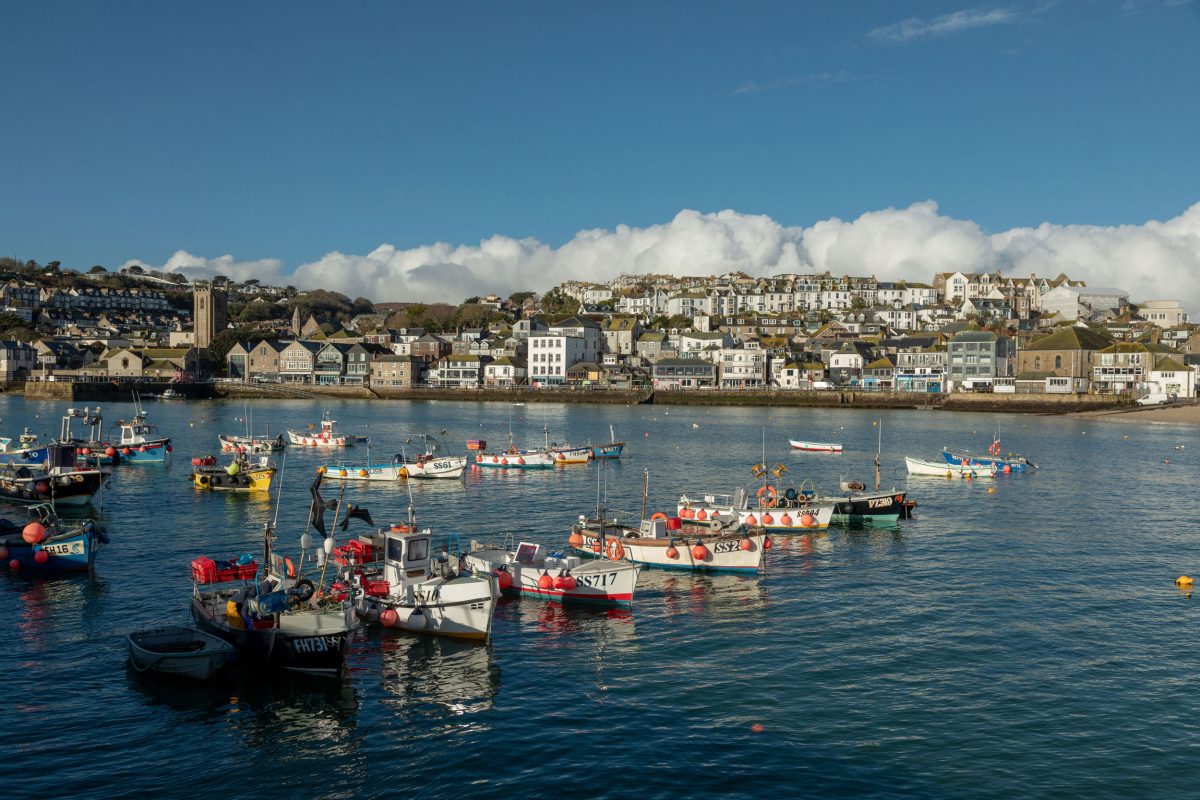A Dose of Antacids, a Quaint British Bay, and a Public Relations Fiasco
Uproar over an ocean alkalinity enhancement pilot project in St. Ives Bay raises an important question: who gets to decide where climate change projects are tested?
Article body copy
Senara Wilson Hodges was nervous. It was April 2023 and she had shown up early to a meeting of the local council in St. Ives, a bucolic seaside community of some 10,000 souls in southwest England. Wilson Hodges, a keen surfer and lifelong environmental campaigner, had joined the council several months earlier to influence some of the issues facing her home: the old town center, once home to fishermen, was being hollowed out by tourism, and development was running rampant. But that night, she had something else on her mind.
Wilson Hodges had been researching a Canadian start-up called Planetary Technologies and was concerned about their activities in St. Ives Bay. Like many of her neighbors, she had only learned about the company a few weeks earlier, when an article in The Times detailed how, over several days during the previous fall, Planetary had added a slurry of magnesium hydroxide to the local water company’s sewage pipe and pumped it into the sea off St. Ives Bay.
The experiment was meant to test a potential solution to climate change called ocean alkalinity enhancement. By raising the alkalinity of the seawater, Planetary hoped to coax the ocean into absorbing more atmospheric carbon dioxide and slow global warming in the process.

Senara Wilson Hodges has been instrumental in pushing back against Planetary Technologies’ plans for ocean alkalinity enhancement in the United Kingdom’s St. Ives Bay. Photo by Mike Newman
For Wilson Hodges, the secretive test rang alarm bells. She quickly found that others in town were equally concerned. How could they sleep soundly while an unknown company was pouring chemicals into the sea, potentially harming the local marine life? Was Planetary’s science even sound? And why were they only finding out now? Most alarmingly to locals, the company planned to press ahead with a much larger trial in the summer.
So Wilson Hodges threw herself into mobilizing opposition. In the weeks before the council meeting, she had organized a protest group and planned a rally on the beach to demonstrate against the project. She hoped the council could at least press Planetary to delay its plans and study its potential environmental impact in more detail. But, as a relatively new member, she was unsure how her proposal would land.
At the meeting that April evening, she stood to the side as her fellow councilors filed into a wood-paneled room at the town hall. Unusually, the session had also attracted a few dozen spectators, some holding signs that read “Keep our sea chemical free.” After cycling through other business, the mayor called on Wilson Hodges to present her case. She stressed that there had not been adequate scientific scrutiny of Planetary’s methods and that the company was essentially planning to use the local sea as a test bed. “We need to understand what this experiment means for St. Ives Bay and the community living around it,” she implored.
To her surprise, the other councilors were equally fired up. Instead of asking Planetary for a delay, they voted near-unanimously to oppose future trials in the bay under any circumstances. As the lowest tier of local government with limited authority beyond administering community services, the town council has no real say about whether the trial will ultimately go ahead—that responsibility falls to the United Kingdom’s Environment Agency. Still, it was a clear signal that Planetary was not welcome in St. Ives.
The heated debate that ensued has pitted old-school environmentalists against climate-tech evangelists, caused a rift with the council in the neighboring town of Hayle, and led the Environment Agency to commission an audit of the project. The regulator will soon deliberate on whether a larger trial can proceed. If it does, it could take place almost two years after Planetary had initially planned.
The controversy in St. Ives has played out as a growing number of start-ups and researchers around the world prepare to conduct their own ocean alkalinity enhancement trials. For all of them, St. Ives could provide a useful case study in how to convince local communities of their good intentions and scientific rigor. Whether Planetary is successful could help determine which, if any, of these technologies are adopted more widely, and how quickly they grow. For locals opposed to the trial, Planetary’s work also raises fundamental questions: After messing with natural ecosystems for so long, how do we repair the damage without causing more? And who gets to decide where that takes place?
The St. Ives council vote marked the culmination of a turbulent few weeks for Mike Kelland, Planetary’s 44-year-old CEO. Kelland, a former software entrepreneur, had cofounded Planetary in 2019 because he believed ocean alkalinity enhancement to be the most promising solution to a problem increasingly dogging global action on climate change: how to not only cut carbon emissions dramatically but also remove those already accumulated in the atmosphere.
Interest in ocean alkalinity enhancement, as well as other solutions that fall under the broad umbrella of geoengineering, has risen alongside a growing consensus that engineered carbon removal is unavoidable. The Intergovernmental Panel on Climate Change (IPCC) now says removing carbon from the atmosphere will be necessary to limit warming to below 2 °C by the end of the century. Even if we blow past that point, carbon removal could help achieve net-negative emissions and reduce global warming in the long run.
Companies are already removing carbon by planting trees and seagrass, and even by directly filtering it out of the air. But in terms of sheer scale, ocean alkalinity enhancement is one of the most potent options. The IPCC estimates that it has the potential to remove up to 100 gigatonnes of carbon dioxide per year, more than twice our annual greenhouse gas emissions and likely far more than any alternative.
What’s more, the ocean is already the world’s largest store of carbon and has absorbed roughly 30 percent of anthropogenic carbon dioxide emissions since the Industrial Revolution. Some of that carbon dioxide is neutralized over time as rain weathers rock and washes minerals into the sea, causing a chain of reactions that alkalinity enhancement essentially simulates at hyper speed.
Planetary, which eventually plans to sell carbon credits that other companies could use to offset their own emissions, developed its approach with a small team of marine scientists. It involves releasing magnesium hydroxide, an alkaline substance that occurs in nature as the mineral brucite but can also be manufactured synthetically. In the ocean, the chemical binds carbon from carbon dioxide already dissolved in the water into bicarbonates, which stay stable for thousands of years. The resulting carbon dioxide deficit allows the sea to draw more from the air, thereby lowering its concentration in the atmosphere.
This process can take weeks, and Planetary says the shallow waters and strong currents of St. Ives Bay offer ideal conditions to keep the alkaline water in the upper layer of the ocean, where the air–sea gas exchange takes place, for long enough. “The starting condition was, this is a great place to do this,” Kelland tells me over a Zoom call from his home in Ottawa, Ontario, sporting AirPods and the faintest hint of stubble. He now spends much of his free time canoeing and hiking in the woods of Ontario, but both of his parents were born in England, and growing up, he whiled away many a summer on beaches around Cornwall, the southwestern county where St. Ives Bay is located.
Planetary has emphasized that magnesium hydroxide is far from an unknown quantity. It is widely used in wastewater treatment—for example, to help filter out heavy metals—and it’s the main ingredient in drugstore laxatives and antacids like Milk of Magnesia. Still, adding anything to natural environments can be contentious. “People hear chemistry and they don’t like that,” says David Ho, a geochemist and professor of oceanography at the University of Hawaiʻi at Mānoa.
Ho himself is involved in several ocean alkalinity enhancement projects as a researcher, including in the United States and Iceland, and is cofounder and chief science officer of nonprofit research organization [C]Worthy, which makes open-source software to quantify the efficacy and side effects of marine carbon removal. Like others in the space, he says the threat to local ecosystems posed by ocean alkalinity enhancement should be fairly low. But there are still potential risks. Adding large amounts of ground-up minerals to the sea could raise the water pH too quickly or add toxic trace metals, which could harm marine organisms.
Other researchers have also flagged that changing the carbon chemistry of the ocean could have unintended side effects, such as slowing the growth of microalgae that provide food for a vast range of sea creatures. On the other hand, lowering the ocean’s acidity could benefit shell-forming organisms and corals.
The point is, we don’t really know what exactly will happen: so far, scientists have mainly studied ocean alkalinity enhancement in labs or have only modeled its effects. While a handful of other companies have conducted small field studies, Planetary is one of the first to undertake trials at a larger scale. “It’s the unknown unknowns that get you sometimes in nature,” Ho says. “Things we didn’t think of.”
Nevertheless, like Ho and many other scientists in the field, Kelland is convinced that any remaining questions about the technology’s efficacy and impacts can only be answered in the open ocean. “There really is no substitute for real-world work in this space,” he says.
That message did not land as intended in St. Ives. When Planetary went public with its plans for the bay in the spring of 2023—and, in the process, first widely disclosed the details of its experiment from the previous fall—local news led with screaming headlines about dumping laxatives in the ocean.
A series of community meetings organized by the company did little to placate outraged residents. A few days after the St. Ives council vote, Wilson Hodges’s protest drew hundreds of people to a beach near the wastewater pipe. Forced into damage control, Kelland later hosted a three-hour Zoom meeting for the community, fielding pointed questions about ecocide and whether he would put profit over nature.
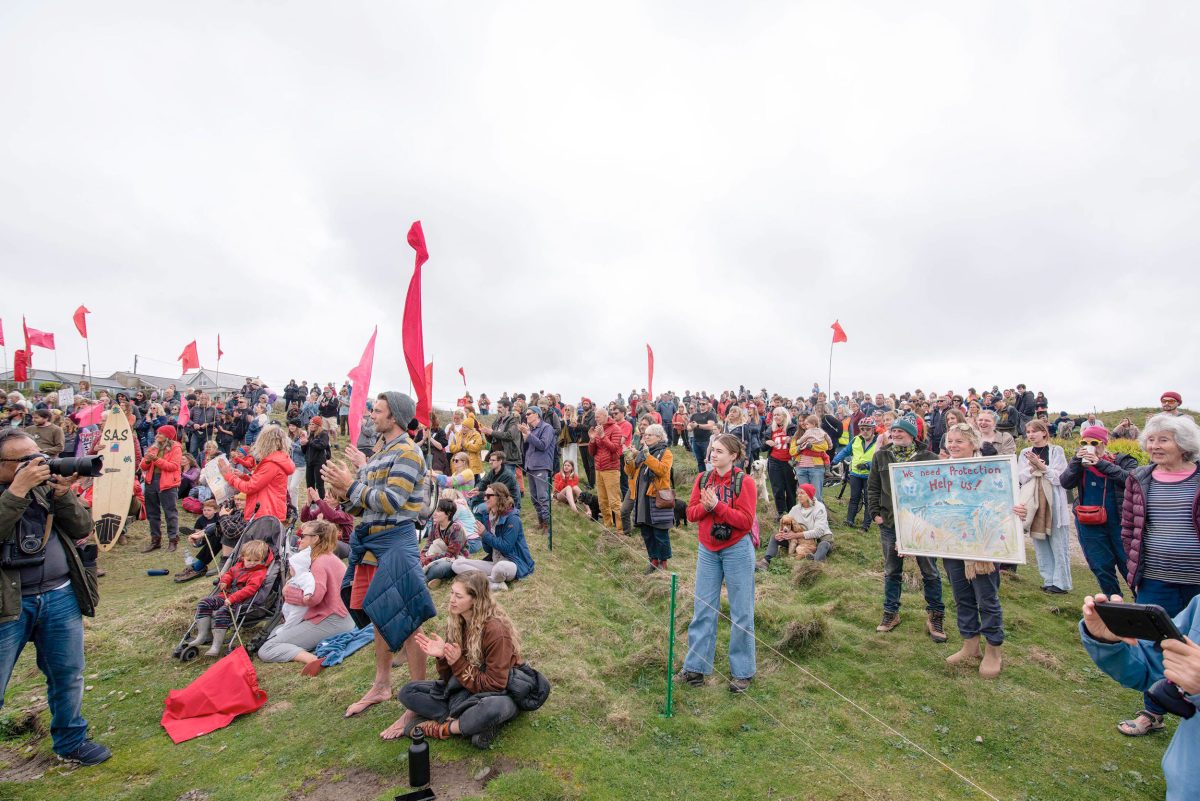
Protestors gathered in April 2023 to oppose Planetary’s ocean alkalinity enhancement work in St. Ives Bay. Photo by Benjamin Gilbert/SOPA Images/ZUMA Press Inc/Alamy Stock Photo
Planetary and South West Water, a private utility, were not required to notify the public of their initial experiment and, given the small dosage, decided it did not merit an official announcement. The uproar months later caught Kelland off guard, and he has since said that it was a mistake not to publicize the test. “We were surprised, and we shouldn’t have been,” he says. “That really put us on the back foot.”
The company’s next trial requires a so-called local enforcement position—essentially an exemption from the Environment Agency that allows South West Water to discharge magnesium hydroxide for a set amount of time. If Planetary eventually decides to set up a permanent operation in St. Ives, South West Water would need to apply to amend its environmental permit, which requires a more in-depth review by the regulator.
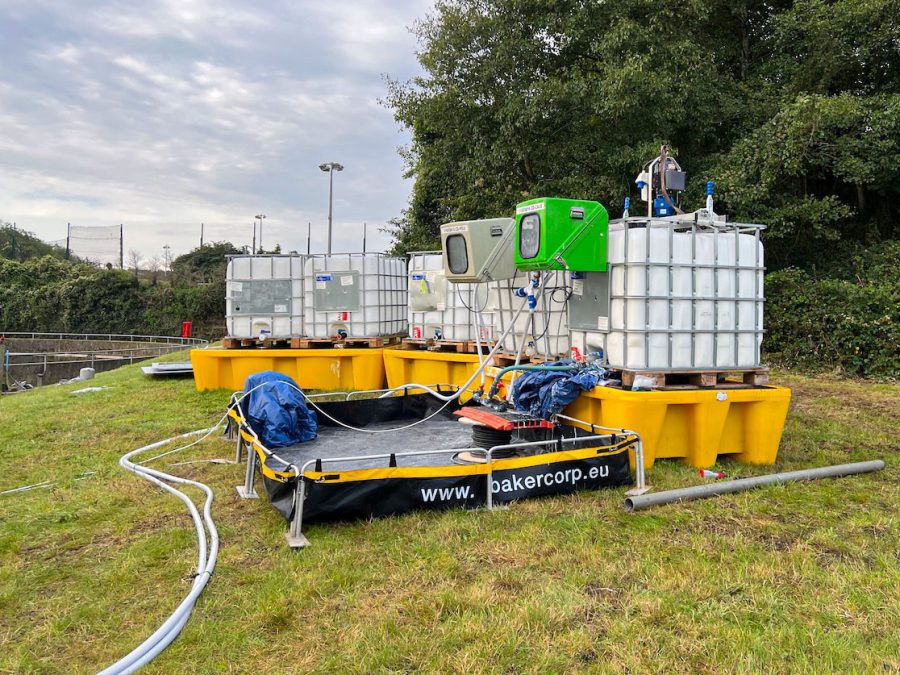
For its initial ocean alkalinity enhancement trial in St. Ives Bay, in the Fall of 2022, Planetary pumped magnesium hydroxide slurry from these six vats through a wastewater pipe into the water 2.4 kilometers offshore. Photo courtesy of Planetary Technologies
Kelland and his team have since gone to great pains to try and make amends, pledging not to sell carbon credits from the next trial, promising more stringent monitoring, and providing frequent updates on its plans. But, for many, the early impression of a foreign company riding roughshod over the local community has stuck.
Kelland began his career by building websites while getting his electrical engineering degree. He later started several companies, with mixed success, and eventually sold his last one, a software consultancy, in 2016. Afterward, he spent several years looking for his next project, with a vague plan to work on climate change.
“All my canoeing buddies, they work for environmental NGOs and things like this,” Kelland says. “I’ve always had that big part of me, but it’s always been a personal side rather than a professional side.”
At the time, Kelland was also mentoring Brock Battochio, a like-minded student in renewable power engineering. Together, they started calling up experts to brainstorm business ideas. One of them was Greg Rau, a marine scientist at the University of California, Santa Cruz, who has studied the carbon cycle for decades and started looking into ocean alkalinity enhancement around the early 2000s. Rau sent Kelland and Battochio a paper he had recently cowritten about an electrogeochemical process that promised to both enhance the sea’s carbon uptake and produce renewable hydrogen. Kelland was intrigued and the three men cofounded Planetary soon after.
The company quickly drew attention. Within just over a year, Shopify had committed to buying carbon credits from what was still called Planetary Hydrogen (Planetary would later change its name and shelve the hydrogen component because it proved too complex). Planetary also drew in millions from investors, grants, and awards, including US $1-million through a competition funded by the Musk Foundation and a £250,000 (approximately US $320,000) award from the British government to research its technique. It used the money to identify promising sites and, in January 2022, proposed a trial in St. Ives Bay.
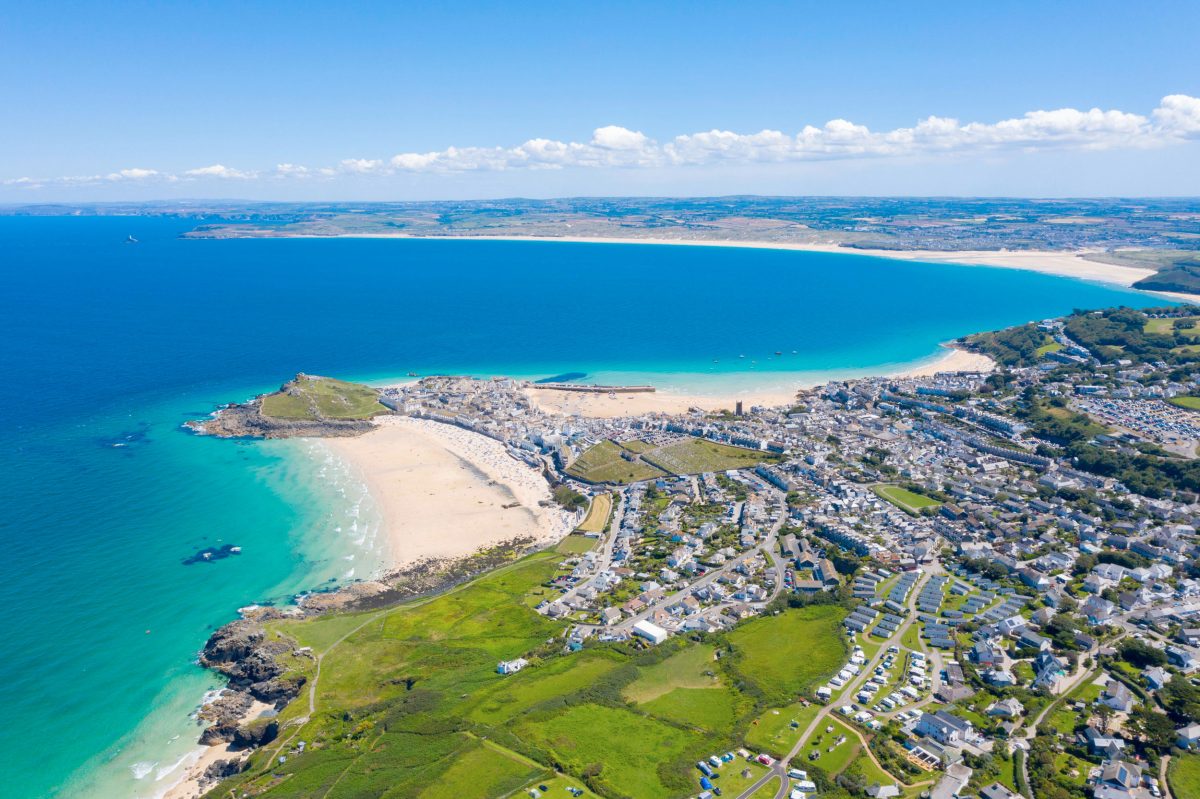
Some locals in St. Ives fear ocean alkalinity enhancement could harm the ecosystem of their bay. Planetary’s founder and others insist the risks are minimal. Photo by Timothy Woolcock/Alamy Stock Photo
The experiment later that year was promising. Over three days in September, Planetary pumped an odorless, milky-white slurry of magnesium hydroxide into the treated wastewater at the South West Water plant. On a chartered boat 2.4 kilometers offshore, above the end of the wastewater pipe that stretches into the bay, a team of Planetary’s own scientists and marine consultants hired by the company lowered their instruments to take measures and collect water samples.
The peer-reviewed results of the experiment have yet to be released, but the consultants later confirmed that their data showed “detectable and statistically significant signals” that the magnesium hydroxide had raised the alkalinity of the seawater around the outfall. It was a subtle sign but enough to convince them that the experiment had been a successful proof of concept.
That initial test was comparatively small, comprising about four tonnes of synthetic magnesium hydroxide. For its next trial, Planetary originally proposed adding up to 450 tonnes of ground-up brucite, procured from mines in China, over three to four months. In the long run, the company thought the site could receive as much as 40 tonnes of magnesium hydroxide per day. Planetary says those volumes will now be much lower, and the trial shorter, given the community pushback and input from the regulator.
In terms of climatic impact, the company originally calculated that the next trial could remove some 200 net tonnes of carbon dioxide from the atmosphere over the span of a year—equivalent to the annual emissions of around 43 cars. To make a tangible difference, carbon removal would need to reach billions of tonnes per year, and Planetary, like other start-ups in the space, dreams of operating a network of sites around the world. It already has a similar project underway in Halifax, Nova Scotia, and is assessing the potential for another site near Chesapeake Bay in Virginia.
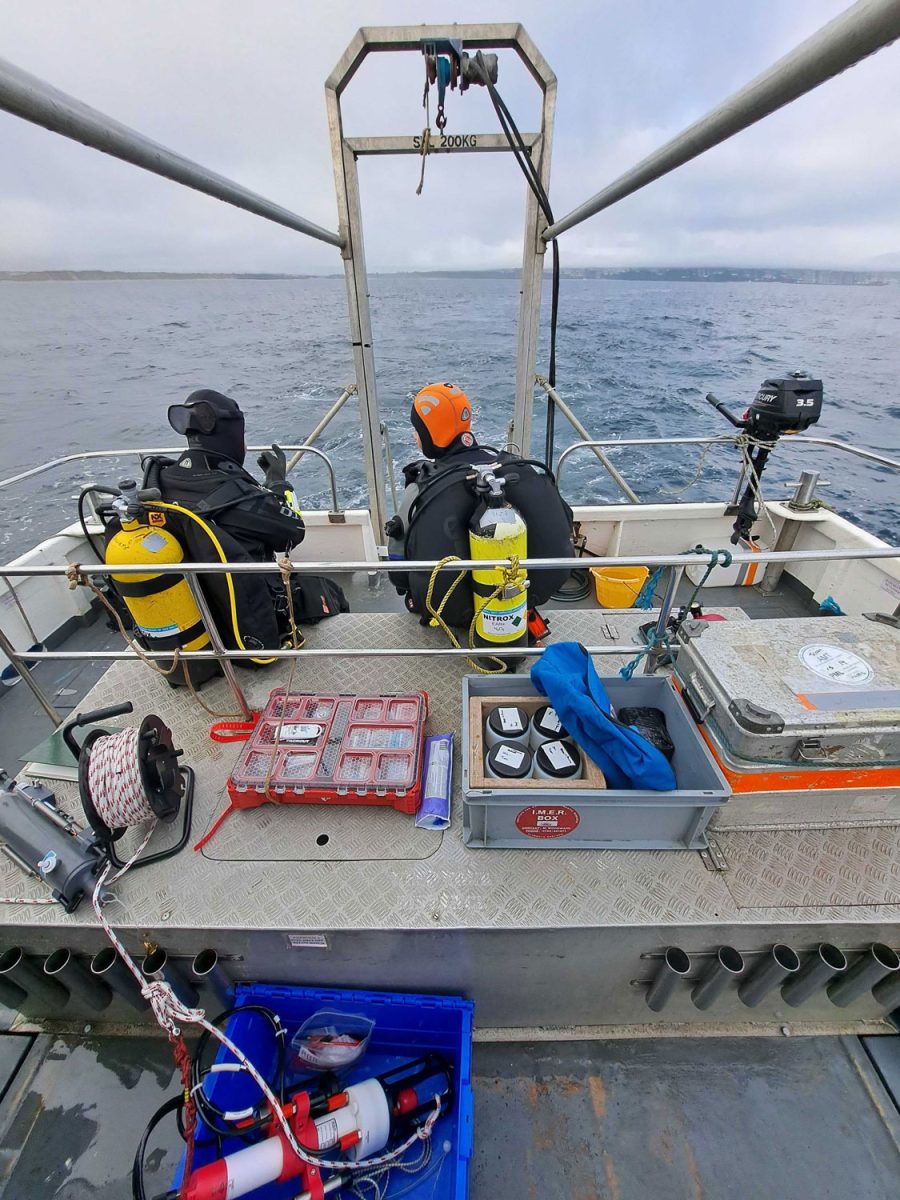
Divers working for Planetary prepare for a seafloor survey of St. Ives Bay in the summer of 2023. Photo courtesy of Planetary Technologies
Back in St. Ives, the company is continuing to lay the groundwork for its next trial, despite the persistence of its critics. In summer 2023, it had a team of marine scientists dive into the bay for surveys, collecting sediment and gathering data on the local ecosystem to serve as a baseline.
“We do all this testing, we do all this monitoring for a reason,” Kelland says. “Every single site we do is going to start that way.”
St. Ives Bay forms a crooked crescent of yellow-sand beaches on the northern coast of Cornwall, the tip of a narrow peninsula that stretches out into the Atlantic between France and Ireland. The county is blessed by the warm waters of the passing Gulf Stream and is milder and sunnier than pretty much anywhere else in the United Kingdom. Over the past two decades, parts of the region have actually turned subtropical, and ornamental palm trees are a common sight in front yards.
The bay itself spans six kilometers where it opens to the sea and is hemmed in by St. Ives, which lies tucked beneath its western headland, and the craggy cliffs of Godrevy Point. Several other towns and villages hug the sandy shore that stretches in between.
The largest of them, Hayle, is closer than St. Ives to both the wastewater treatment plant and the pipe used by Planetary. Nevertheless, the town has been more receptive to the trial, at least when measured by the barometer of hyperlocal politics. A week before St. Ives’s council voted to categorically oppose Planetary’s plans, Hayle’s had chosen instead to support the trial. (Each council covers a population of around 10,000 people, including from surrounding communities.)
“We need them desperately, these carbon-capture technologies,” says Anne-Marie Rance, who was mayor of Hayle until April 2024, when she resigned due to health reasons. Rance is a small, soft-spoken woman with degrees in geoscience and earth science, and she warmed to Planetary’s idea right away. She has felt compelled to defend the trial against its diehard opponents, driven by a sense that the stakes reach far beyond this corner of Cornwall.
“If everywhere has these people and it shuts down every single experiment around the world, we’re not gonna have these technologies,” she says. “And then we’re just in a complete mire.”
Still, Rance concedes that the impression left by Planetary’s initial community engagement, which appeared to downplay the scale of the trial and was widely perceived as evasive and condescending, has been hard to dislodge. “If [Planetary] had said, from the start, this is ground rock going into the sea, there wouldn’t have been anything.” Now, she says, the skeptics “have built up their brick walls.”
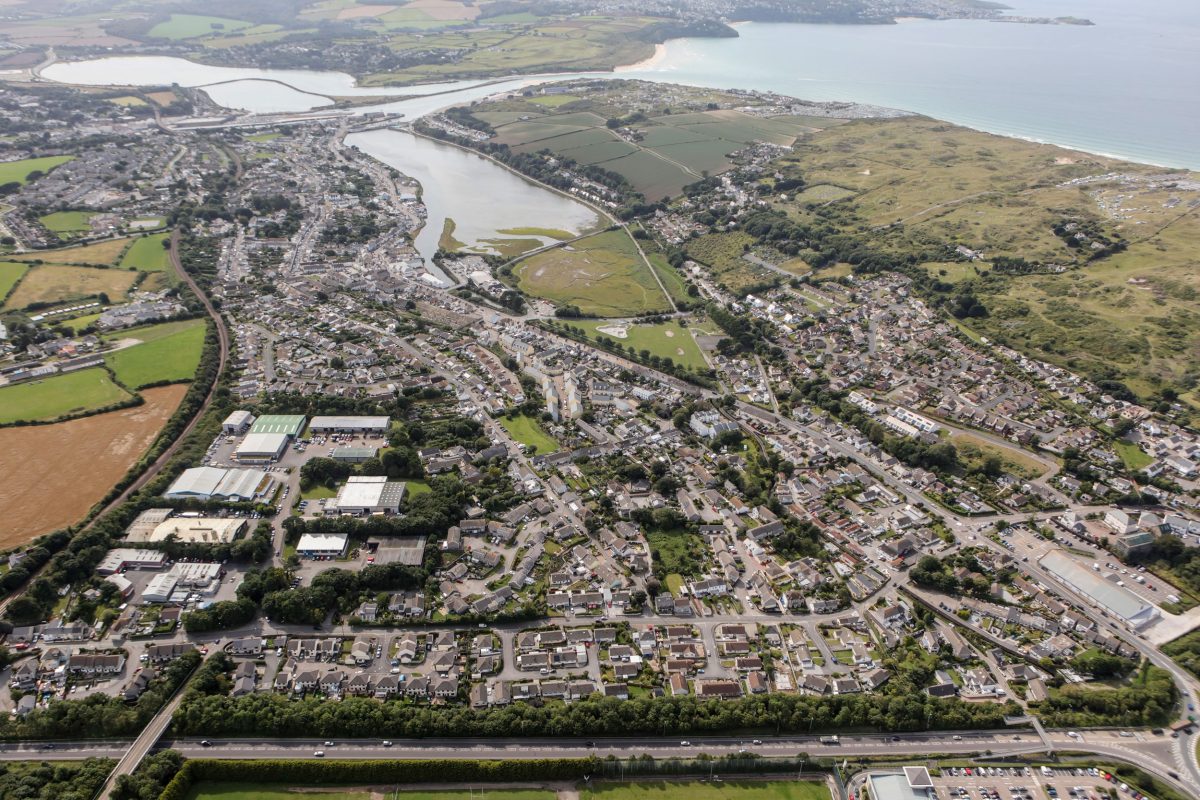
The town council in Hayle, another community lining St. Ives Bay, has shown more support of Planetary’s work than its counterpart in St. Ives. Photo by Commission Air/Alamy Stock Photo
Tensions have run high at times. At a Hayle council meeting about sewage discharges in the fall of 2023, Wilson Hodges and others brought up Planetary’s trial instead. Rance shut them down repeatedly, and several people complained about her afterward. Rance also feels it was improper for Wilson Hodges to introduce the council motion in St. Ives, given her role as the protest organizer. Rance herself has been accused of being inappropriately close to Planetary—for example, she hosted one of the company’s early community meetings.
Rance says the constant conflict has taken a toll on her mental health. “I wish the Environment Agency was just like, ‘Tick, let’s get on with it,’” she says. “Or not. Just make a decision.”
Like Rance, Wilson Hodges is keenly aware of the bay’s role as a test bed that could influence how geoengineering proceeds around the world. But rather than lending the project urgency, she feels this makes a strong case for holding companies like Planetary to account. After all, the industry is in its early stages, and there are few established rules and procedures around ocean alkalinity enhancement. “We’re a little guinea pig case study,” she says.
When we meet up for the first time in a café along the waterfront in St. Ives, Wilson Hodges wears green rain boots and a matching wooly hat that hides her blond undercut. It’s mid-December and the café is playing poppy Christmas music. Outside, turnstones peck for food on the harbor wall, and the low tide has stranded a handful of small boats along the pier.
For centuries, St. Ives maintained a large commercial fishing fleet, but only a few dozen boats remain, mostly owned by hobbyists who fish for mackerel and crawfish, lobster and crab. The town later became popular with artists and today mostly depends on tourism. Many of the former fishermen’s cottages close to the harbor are now holiday homes, lending the area a ghostly feel during the off-season.
Wilson Hodges was born into a fishing and farming family in Zennor, a short drive down the coast. At university in the early 1990s, she set up an environmental group with her friend—“This was when we thought recycling was, like, the key”—and, after graduating, volunteered to work for the Women’s Environmental Network. She eventually grew disillusioned and pursued a career in TV before returning from London to Cornwall in 2009 to bring up her two young daughters.
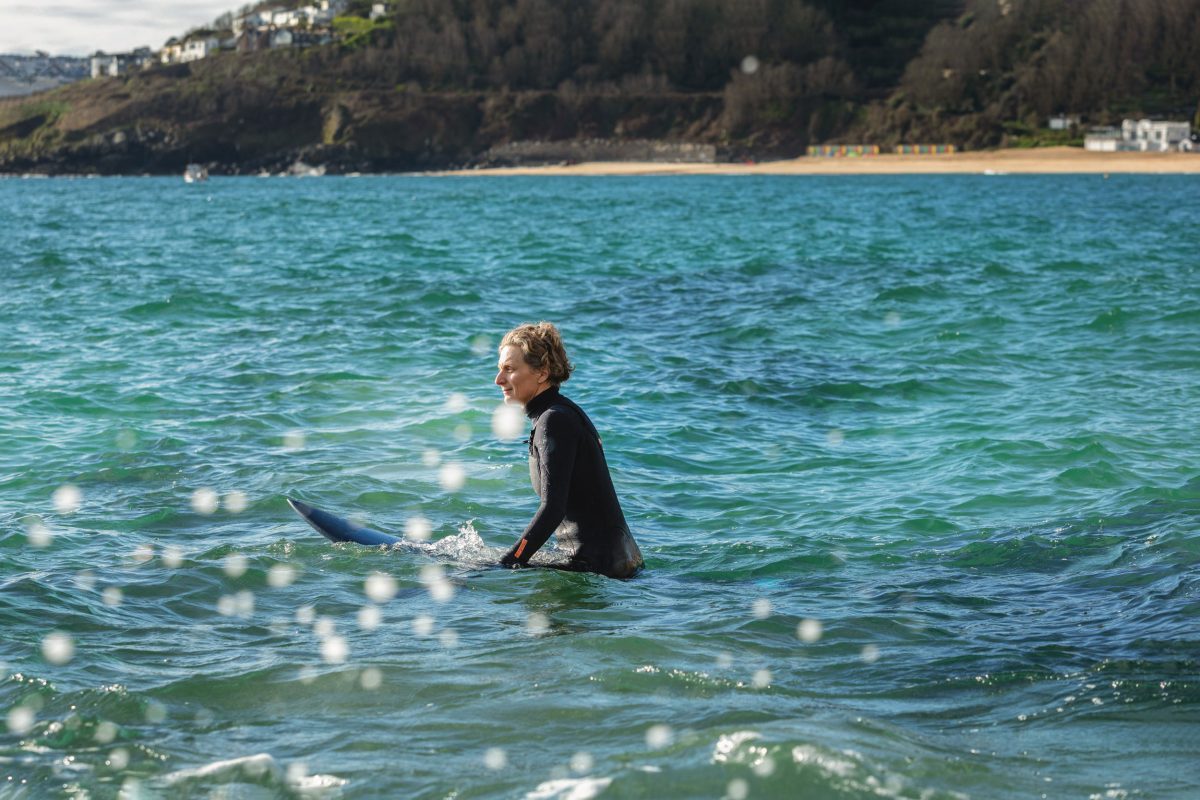
Wilson Hodges, a keen surfer, quickly jumped into action when Planetary first publicly disclosed the details of its initial trial in St. Ives Bay. Photo by Mike Newman
When UK-based group Extinction Rebellion started staging large-scale disruptions across Britain a few years ago in response to the climate crisis, Wilson Hodges found her passion for environmental activism rekindled. She started campaigning locally and filmed some of the group’s early mass protests in London, where she even got arrested a few times. Finally, she felt like there was renewed urgency around addressing climate change. “I was really excited about that,” she says.
In the months since Planetary came to town, Wilson Hodges has doggedly kept up her crusade—and managed to recruit some influential allies. One of them is Sue Sayer, a former teacher and the founder of the Cornwall Seal Group Research Trust, a local citizen science research network. Sayer fell in love with seals during childhood holidays in Scotland, and her network of volunteers now carries out weekly surveys of grey seals across the Cornish coast.
Sayer herself monitors a secluded cove that happens to be not far from the wastewater pipe. For the past 24 years, she has trekked out there twice a week to survey the seals that haul out to the beach at low tide, looking, from the crumbling cliff edge above, like slugs washed up on shore. Thousands of individual seals have visited the cove over the past two decades on their migrations across the Celtic Sea.
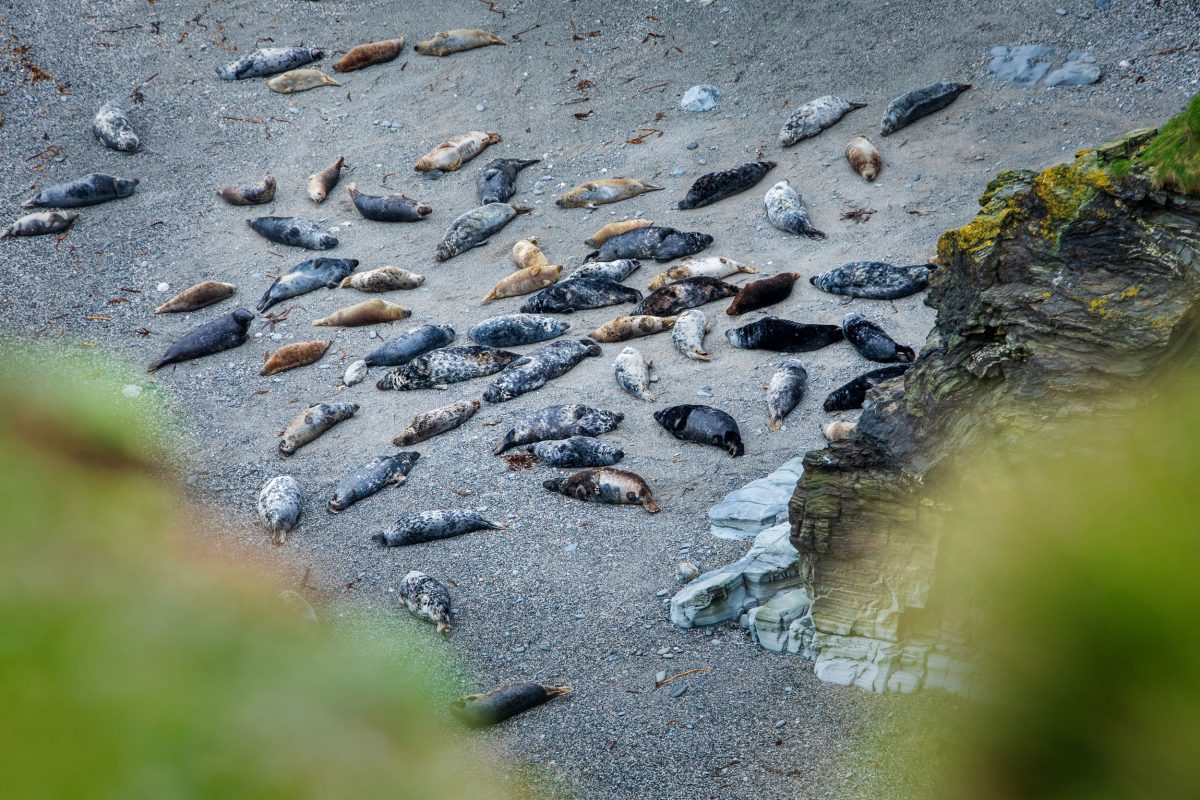
Several coves near St. Ives Bay serve as important rest stops for seals migrating across the Celtic Sea. Photo by Mike Newman
“This is a really, really important site. It’s like a service station on a seal motorway,” Sayer says when I visit her at the trust’s headquarters, a small room on the second floor of her cottage in Hayle. Sayer wears her hair in pigtails and a fringe that falls into her eyes, and her house is overflowing with seal paraphernalia: books about seals, seal figurines, cutouts, models and stuffed toys, and seal-shaped candles and mugs. The entire skeleton of a male seal named Septimus sits in the lounge downstairs. “Everyone has skeletons in their closet; I have mine in my lounge,” she says dryly.
Sayer was initially curious about Planetary’s proposal but quickly grew alarmed as others voiced concerns. Over the past year, she has tracked Planetary’s progress, collected scientific papers, and repeatedly written to the Environment Agency and local politicians. She is particularly worried that Planetary has not looked closely enough at potential impacts on the bay’s fauna, from seals down to plankton.
“I really like Mike [Kelland]. I like him as a bloke … And he genuinely believes what he’s doing is the right thing to do to save the planet,” she says. “I still don’t feel like I’m against it. I just want to do it safely and properly.”
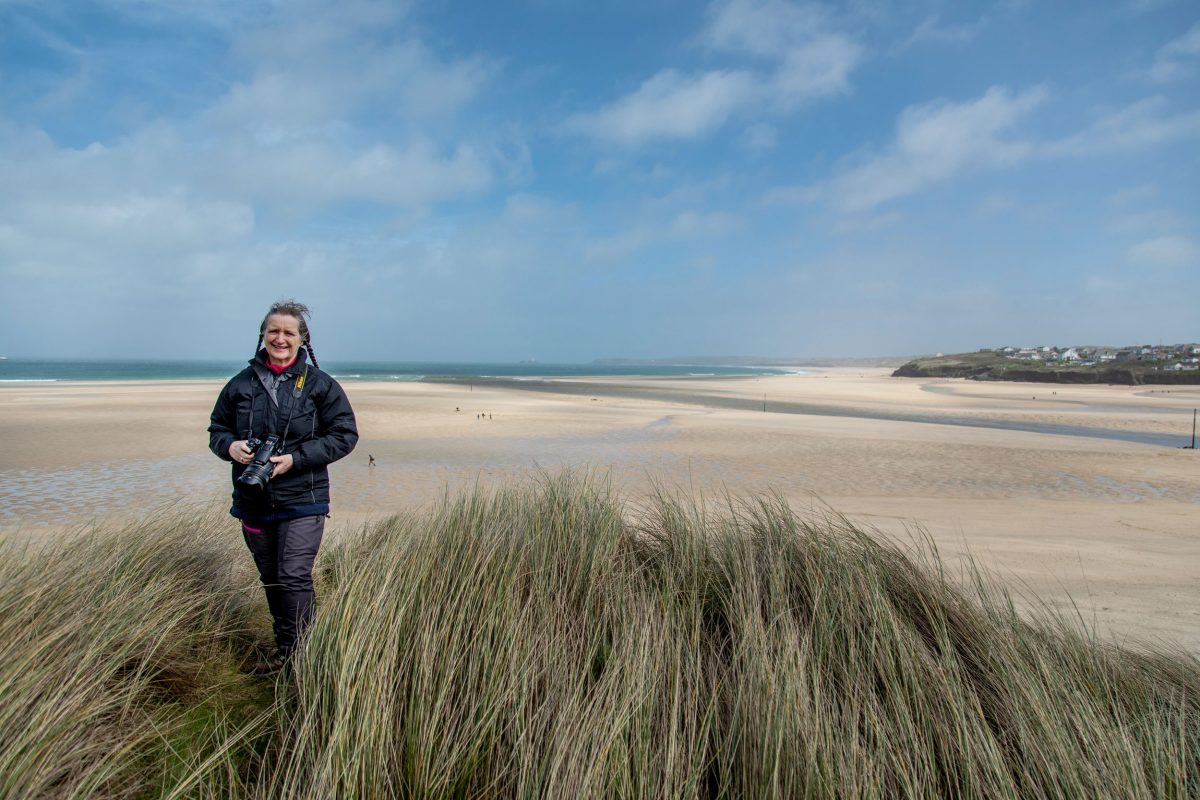
Sue Sayer, founder of the Cornwall Seal Group Research Trust, is among the locals advocating for a more cautious approach to introducing ocean alkalinity enhancement. Photo by Mike Newman
For Planetary’s critics, some recent developments have felt like vindication. In October 2023, signatories to the London Convention and London Protocol, a pair of international agreements that regulate the dumping of waste at sea, issued a general statement on marine geoengineering that warned of potential “deleterious effects that are widespread, long-lasting or severe” and highlighted the uncertainty around its impacts on sea life.
Around the same time, the Environment Agency commissioned an audit of Planetary’s proposal from the Water Research Centre, a technical consultancy that frequently does work for the government and the water industry. It felt like a major concession to what Wilson Hodges and Sayer had been asking for: independent scrutiny of Planetary’s science and methods.
Back at the café, Wilson Hodges is nevertheless doubtful whether the audit will assuage her concerns. Her initial skepticism has hardened into a steely resolve to stop the project. “I’m not sure what would convince me at this point,” she admits.
“There’s too many questions about it and not enough solid [evidence],” agrees Johnnie Wells, the mayor of St. Ives, who stops by to share his own misgivings about the trial. “You don’t wanna be the Nimby that says no,” he says. “I just don’t feel like it’s gonna do what they say it is.”
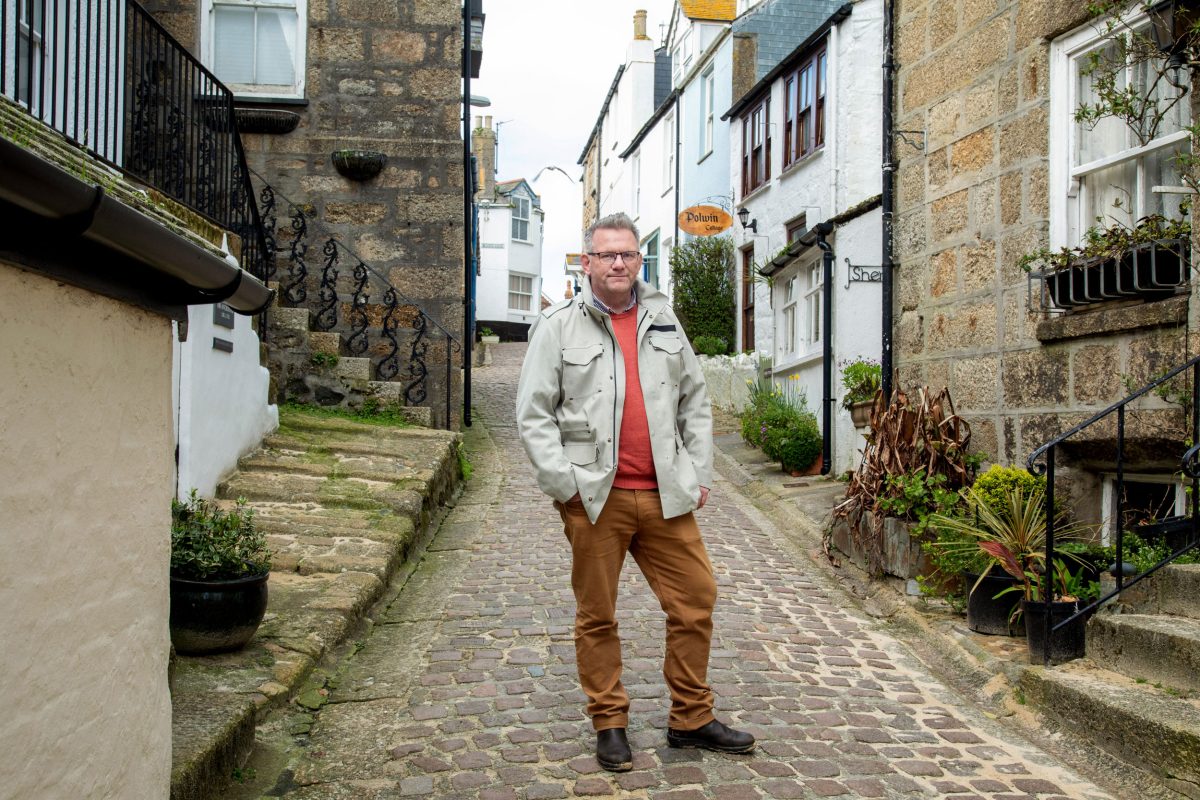
St. Ives mayor Johnnie Wells says there are “too many questions” surrounding Planetary’s plans to implement ocean alkalinity enhancement in local waters. Photo by Mike Newman
Wells suspects that Planetary is motivated by money, not science, and thinks the company’s plan to sell carbon credits will simply turn the venture into an opportunity for other companies to greenwash their practices. Others in town are also deeply suspicious about the involvement of South West Water, which is notorious for releasing raw sewage around Cornwall. Then there’s the potential carbon footprint of the whole operation, if it uses brucite that’s mined in China and processed in the United States before it’s shipped to Cornwall.
Above all, Wells feels that the bay’s precious environment has seen enough abuse. Cornwall’s vast tin and copper mines fueled the Industrial Revolution and brought heavy pollution to the area. Wells remembers growing up near the Red River, which flows into the bay below the cliffs of Godrevy and for decades was dyed a deep shade of red by mining waste. “We’ve suffered badly with dumped chemicals in the sea,” he says.
For Planetary, it has been an uphill battle to win back goodwill. Kelland thinks a simple miscommunication fueled much of the uproar over the trial and argues that his critics are gravely misjudging the risks involved. The worst-case scenario, he says, is that the magnesium hydroxide will kill some phytoplankton immediately around the wastewater pipe, which he insists could be reversed by stopping the whole process.
“It’s not about not having any risks—that’s not a thing. But you have to understand the scale of those risks,” he says. “We get statements from people saying this trial could kill all things in the bay. There is no way that it could do that.”
Nevertheless, questions remain around the precise impact on marine life and the company’s ability to measure it. Will Burt, Planetary’s chief ocean scientist, recently admitted in yet another community meeting that the company plans to finish its baseline surveys in the bay while its next trial is already underway.
Although the project is paused for now, Planetary has been able to carry out a similar trial at its Canadian site in Halifax Harbour in the meantime. Over two months in the fall of 2023, the company added 280 tonnes of magnesium hydroxide to the cooling water of a gas-fired power plant before it was released back into the sea. It marked one of the largest ocean alkalinity enhancement trials anywhere to date.
The conditions were not ideal: the strong current near the shore meant natural variability in pH was already high, which made attributing any alkalinity change to the experiment more difficult. But Planetary is confident it will find the evidence to show that its method works as designed. The company, alongside researchers at Nova Scotia’s Dalhousie University, is now analyzing the reams of data it collected on everything from the presence of sediment metals to plankton health and changes in water chemistry.

In the fall of 2023, Planetary conducted an ocean alkalinity enhancement trial in Halifax, Nova Scotia, where water shooting out of an outfall pipe causes the water to foam. Photo courtesy of Planetary Technologies
“You have to do the things first before you can really nail down how best to do them,” Burt says. “Fieldwork at sea never goes smoothly. The oceans are really annoying in that way.”
Planetary’s local reception, both in the press and community meetings, was vastly more positive in Halifax. Kelland says it helps that Planetary is headquartered in Nova Scotia and partners with a well-known local university. But the company has also clearly learned from its experience in St. Ives, making sure to engage early and publicly.
In Cornwall, Kelland has repeatedly assured residents that, although Planetary does not need approval from local councils, the trial will only go ahead if the community is on its side. Pressed on what exactly that means, however, he’s vague. “All of that is TBD,” he tells me. “You get 300 people [protesting] out on the beach. Well, you’ve got 400,000 people in the region. Is that really an indicator or not? These things are never super clear.”
After more than a year of delays, it looks like he may eventually get his wish. In late February 2024, the Environment Agency released the in-depth report it commissioned from the Water Research Centre. The headline findings: the trial has the potential for significant carbon removal and likely poses very low risk to marine organisms.
Planetary is now amending its application ahead of a final decision on the next trial, taking on board a handful of recommendations from the audit, including additional monitoring. Because the audit expressed concerns about the origins and traceability of the Chinese magnesium hydroxide Planetary intended to use, the company has also decided to find another source for the material—or even another mineral altogether—which could delay the trial by another six to 12 months. Clearly, the company is committed to making the project work.
True to her word, Wilson Hodges remains unconvinced. She has started work on a documentary about the story and has continued to drum up opposition. Sayer, meanwhile, is preparing to fund her own biological monitoring if the trial goes ahead.
Recently, they both joined a second community protest near the wastewater pipe—almost a year to the day after their first. Twenty-three boats gathered in the bay while an estimated 250 protesters waved red flags on the beach, before wading into the water for a mass swim. In a speech, Wilson Hodges reflected on the past 12 months and all they had achieved in delaying the project.
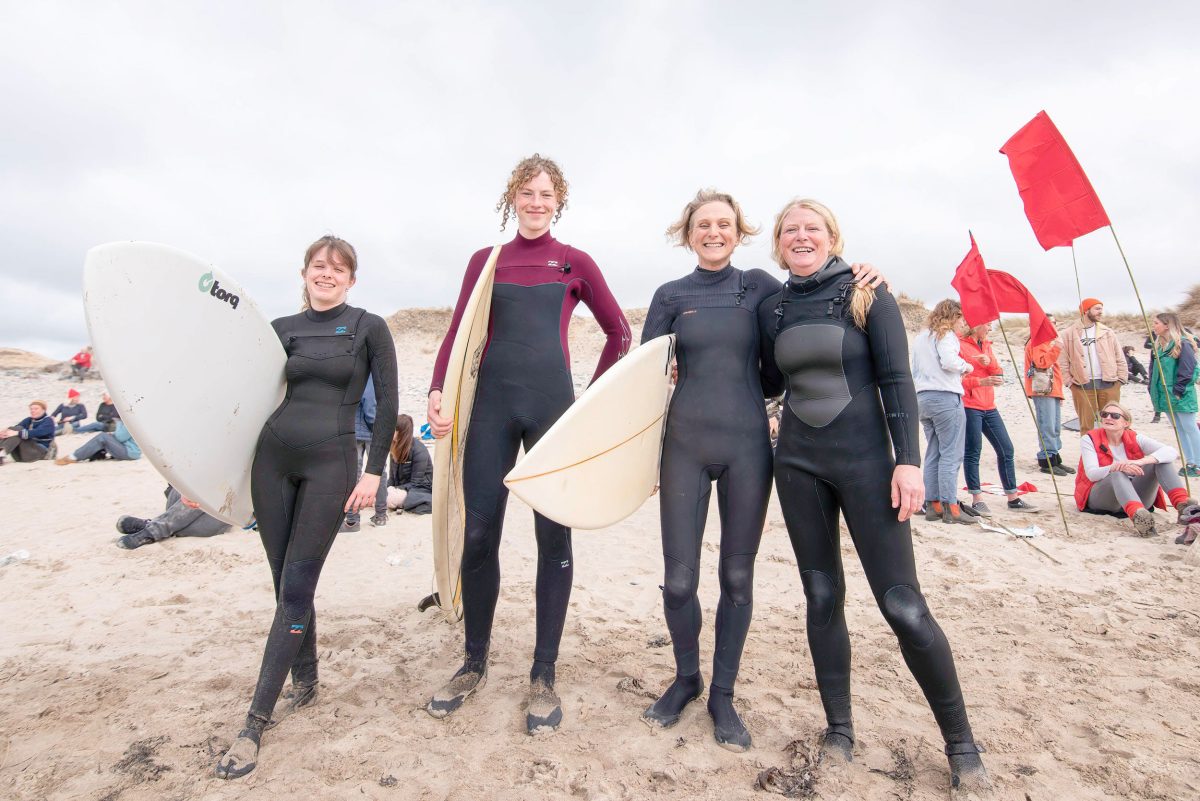
Wilson Hodges, second from the right, stands among other protestors in April 2023. Photo by Benjamin Gilbert/SOPA Images/ZUMA Press Inc/Alamy Stock Photo
What’s clear from spending time in the region is that locals are devoted to their bay. Their skepticism is understandable at a time when too many companies hide behind marketing messages while prioritizing profit over sustainability. Even when projects are noble and framed with the best intentions, the uncomfortable reality is that we have a track record of rushing into things with unintended consequences.
But it’s also clear that there is critical urgency around carbon removal. If alkalization doesn’t scramble local ecosystems, continued global warming certainly will. And governments could still decide to press on with large-scale carbon removal in the future, once it becomes even more of a last resort. Then, communities like St. Ives may find themselves without much of a say at all.


